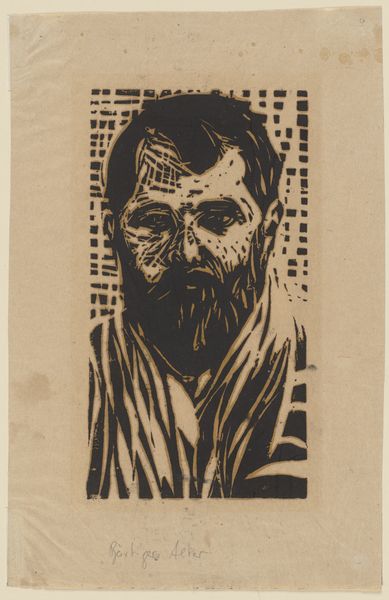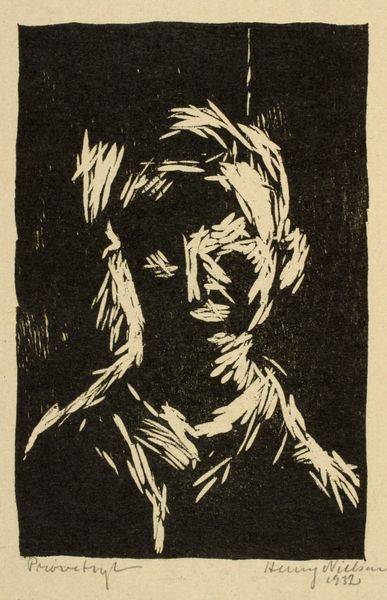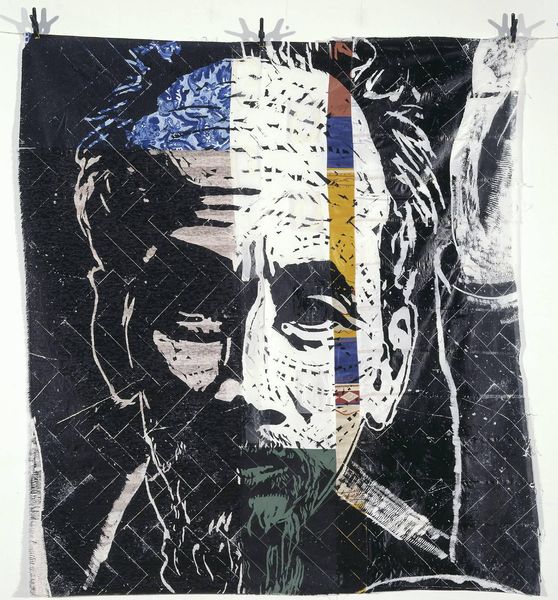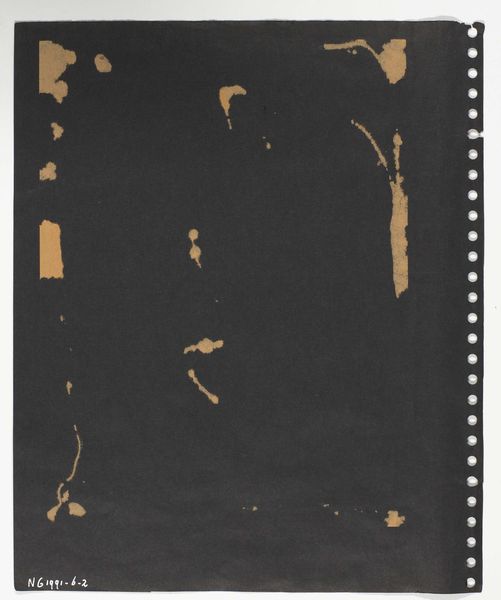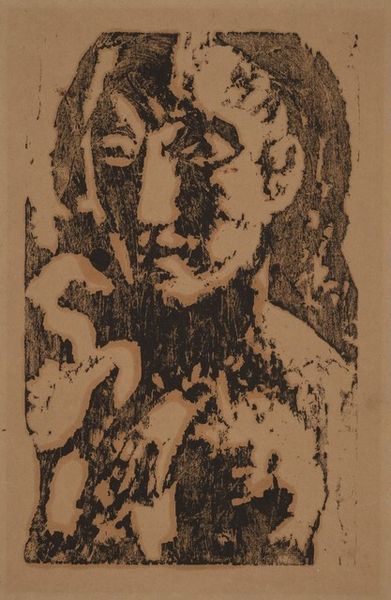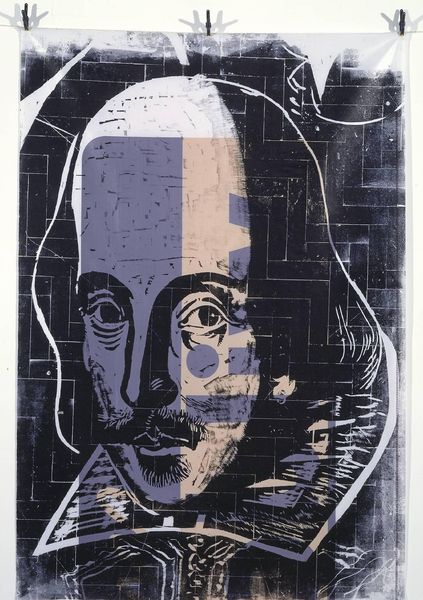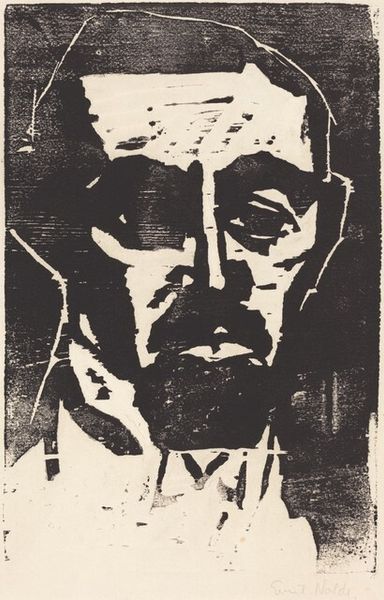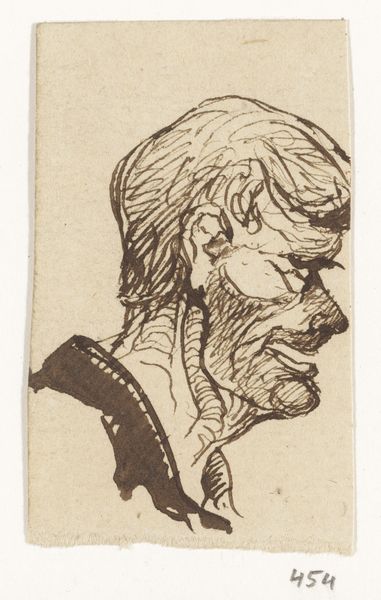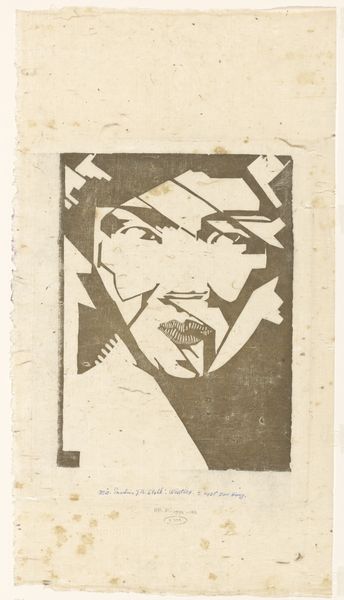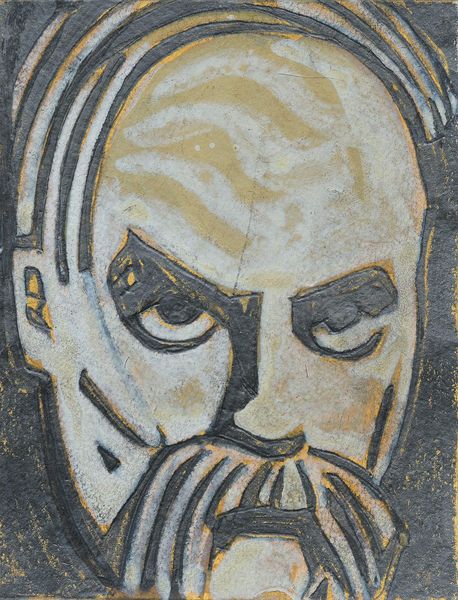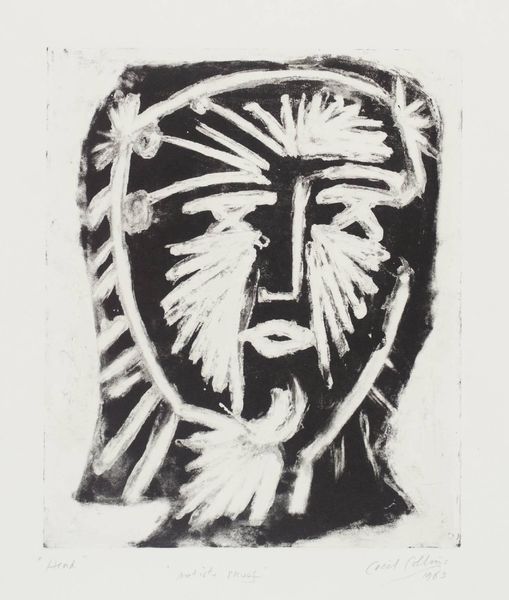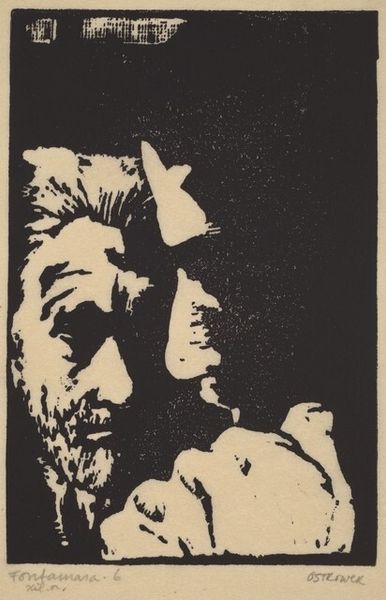
print, woodcut
#
portrait
#
ink painting
# print
#
figuration
#
linocut print
#
woodcut
Dimensions: 210 mm (height) x 161 mm (width) (billedmaal)
Editor: This striking 1927 woodcut, "Man's Portrait," by Alfred Simonsen... it's incredibly graphic, stark. The figure is almost emerging from the darkness. What symbols or meanings do you find resonate within it? Curator: Indeed. It’s fascinating how Simonsen employs this graphic language. Think of how black and white have operated symbolically across centuries – purity versus darkness, life versus death. Here, the stark contrast evokes a sense of introspection, even existential contemplation. Does the portrait reveal or conceal? Editor: It makes you wonder, doesn’t it? His gaze is directed downwards... almost contemplative. The lack of detail is interesting - stripping back the personal characteristics somehow makes it feel more universal, almost archetypal. Curator: Precisely! This stripping back, as you say, lends itself to the psychological weight. Consider the period – the interwar years, a time of profound societal upheaval and questioning. Do you think the artist is reflecting that collective mood? The darkness could symbolise a collective depression of that historical period. Editor: I can see that. A world weary and searching for meaning, mirrored in a single face. Also, that slightly obscured object near the chin seems to carry a weight in relation to the portrait. It may have represented the occupation of the subject as the printing resembles industrial machinery or tools. What do you think? Curator: Yes, there appears to be some mechanism present which lends itself to a commentary on that very world we speak of. The image creates almost a cognitive friction in trying to interpret that component. So much can be symbolised through those shapes, adding new weight with different contextual applications, something every individual takes with them while gazing upon its face. Editor: That is quite true! Thank you! The work now seems so much richer for me, filled with layers of personal and cultural reflection, all conveyed through simple contrasts. Curator: The cultural memory and emotions that an artwork can reflect is ever flowing, which is part of the power in imagery and how its symbolism continues to resonate over time.
Comments
No comments
Be the first to comment and join the conversation on the ultimate creative platform.
